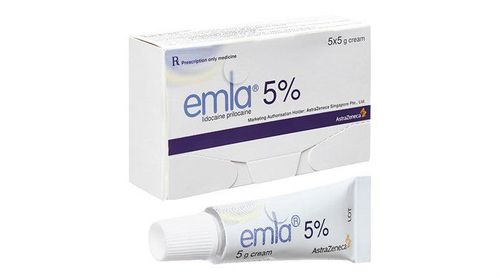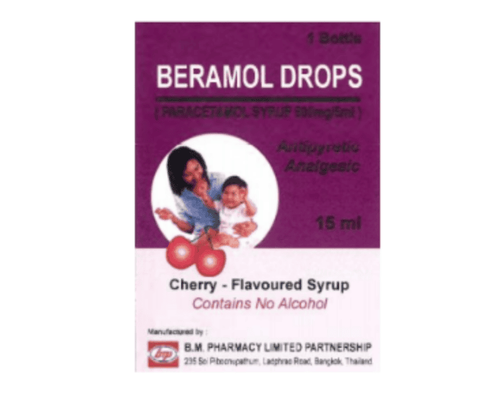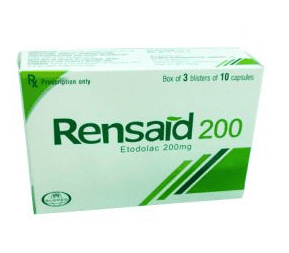This is an automatically translated article.
What is Xilonibsa? Xilonibsa 2% is a prescription medication (ETC). The main ingredients inside one ampoule include Lidocaine hydrochloride (36mg) and Epinephrine tartrate (0.0255mg) and other excipients just enough. So how does Xilonibsa 2% work? Please refer to the article below for more information about this drug.
1. Uses of Xilonibsa 2%
Lidocaine hydrochloride ingredient in the drug is an anesthetic of the amide group, with a medium duration of action. The mechanism of action of this substance is to jointly block the generation and transmission of nerve impulses by reducing the permeability of nerve cell membranes to sodium ions. Thereby, inhibiting depolarization and stabilizing the membrane leads to a decrease in action potential propagation and block nerve impulse conduction.
With the addition of vasoconstrictor adrenaline, the anesthetic duration of lidocaine is increased. As a result, the absorption of anesthetics is slower, has a greater concentration, and has a longer duration of action. This combination also reduces the adverse reactions caused by lidocaine.
Xilonibsa 2% is usually indicated for local anesthesia before placing technical equipment, performing endoscopy, examination, dentistry (gingivitis, tooth extraction ...) or conducting other procedures. Medicines are effective in reducing pain when performing the above procedures.
2. Dosage and suggested usage
The dose of Xilonibsa 2% will depend on the anesthetic tissue, the technique of anesthesia applied and the area of anesthesia. Dosage reference:
Anesthesia with nerve block and local anesthesia, the usual dose is 1ml/day; Surgical anesthesia: 1.5 - 2ml/day. Note on dosage:
Adults should not use more than 7mg/kg body weight per day; People weighing 70kg should not use more than 500mg; Children will be dose adjusted depending on weight, age and type of surgery performed, however do not exceed 5mg/kg body weight per day; The drug is indicated for children under 4 years of age. Xilonibsa 2% is not used for epidural, spinal or sacral anesthesia and is not administered intravenously. Direct application of Xilonibsa 2% solution for local anesthesia of the mucous membranes of the nose, throat, bronchi, mouth, urinary tract, genital tract and esophagus. Inject Xilonibsa 2% directly into the tissue under layer-by-layer anesthesia. Injected subcutaneously when local anesthetic blocks the area.
3. Cases of not using Xilonibsa 2% drug
Cases of hypersensitivity or allergy to Lidocaine hydrochloride and Epinephrine tartrate and other ingredients of the drug; People who are allergic to anesthetics of the amide group; People with severe sinoatrial disorders, Adams-Stokes syndrome, severe myocardial failure, intraventricular block in the absence of a pacemaker, atrioventricular block, severe coagulopathy, neurodegenerative disorders; Xilonibsa 2% is not used for people with hypertension, unstable angina, severe cardiovascular disease, myocardial infarction, recent coronary artery surgery, congestive heart failure by drugs containing adrenaline.
4. Note with Xilonibsa 2% drug
Note caution when using the drug for people with heart failure, severe hypoxia, severe respiratory failure, liver disease; hypovolemia or shock, bradycardia, atrial fibrillation, incomplete heart block; Be careful in case of systemic poisoning in seriously ill or debilitated people; Inflammatory or infected tissues should not be injected; Do not put the drug into the damaged urethra because the drug will be absorbed quickly causing systemic reactions instead of local; There is a risk of allergic reactions, severe asthma in susceptible people, especially those with a history of bronchial asthma; There is a possibility of slowing down the fetal heart rate because of local anesthetic effect, so it should be carefully considered when used in pregnant women; Lidocaine can be excreted in breast milk, but in small amounts without affecting the baby, it can be considered for use in nursing mothers; The drug has the potential to affect the person driving or operating machinery, so it should be used with caution.5. How to handle an overdose of Xilonibsa 2%
When intravascular overdosage may appear after 15 - 60 minutes, adverse reactions will appear. Toxicity will radiate to the central nervous system first and then to the cardiovascular system. Signs of overdose in the central nervous system such as confusion, sedation, more severe coma, convulsions, respiratory arrest. Signs of overdose in the cardiovascular system such as hypotension, heart failure, atrioventricular block, arrhythmia.
Symptoms of overdose caused by adrenaline such as: Increased heart rate, sweating, digestive disorders, feeling hot, headache, increased blood pressure, arrhythmia
In case of overdose, the injection should be stopped immediately. when there is a reaction. Treatment is only supportive by applying conventional methods and focusing on rehabilitation measures such as: placing the patient in an appropriate position, using anticonvulsants, antihypertensive / hypotensive drugs. pressure, infusion....
Please dial HOTLINE for more information or register for an appointment HERE. Download MyVinmec app to make appointments faster and to manage your bookings easily.













